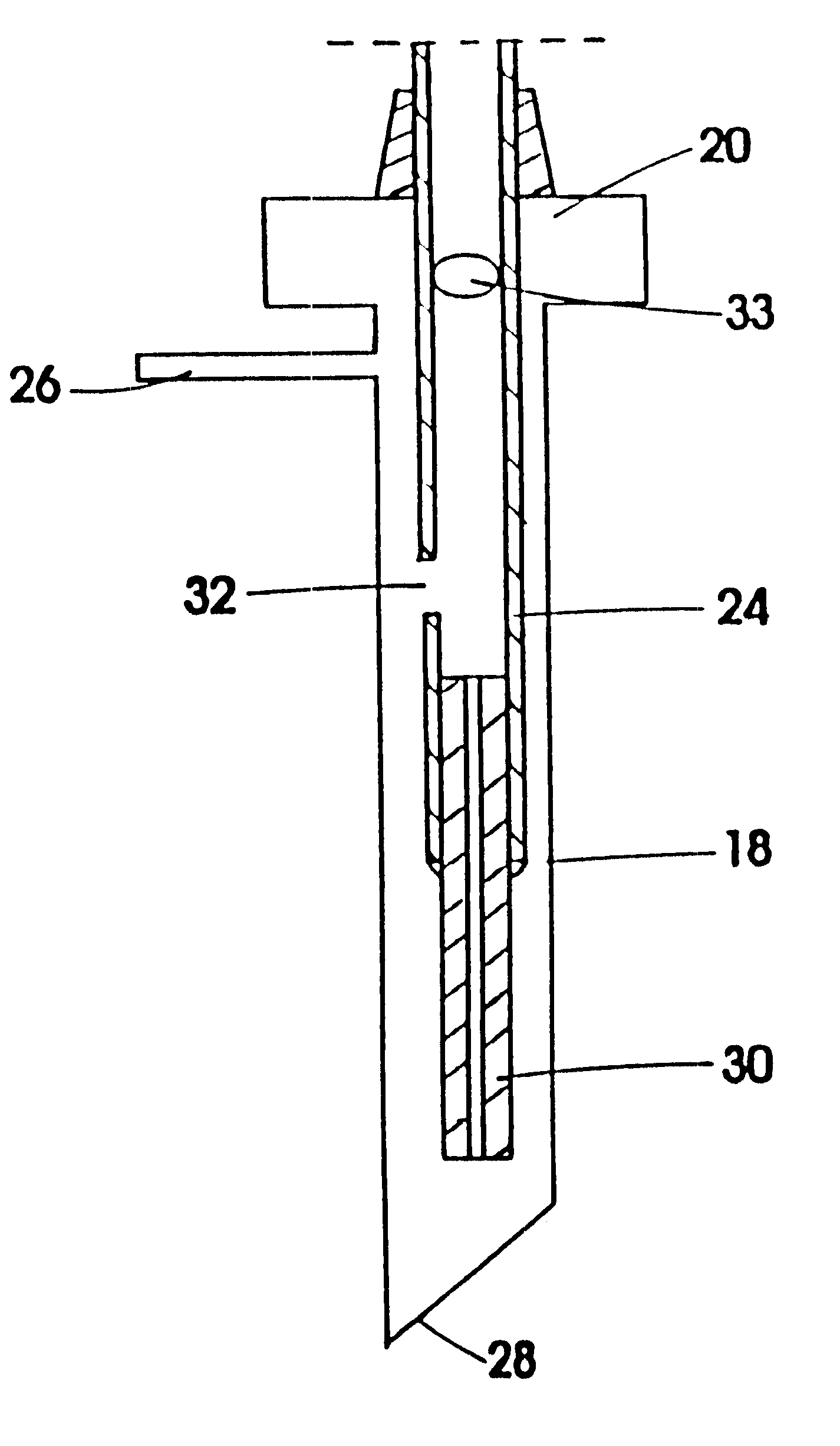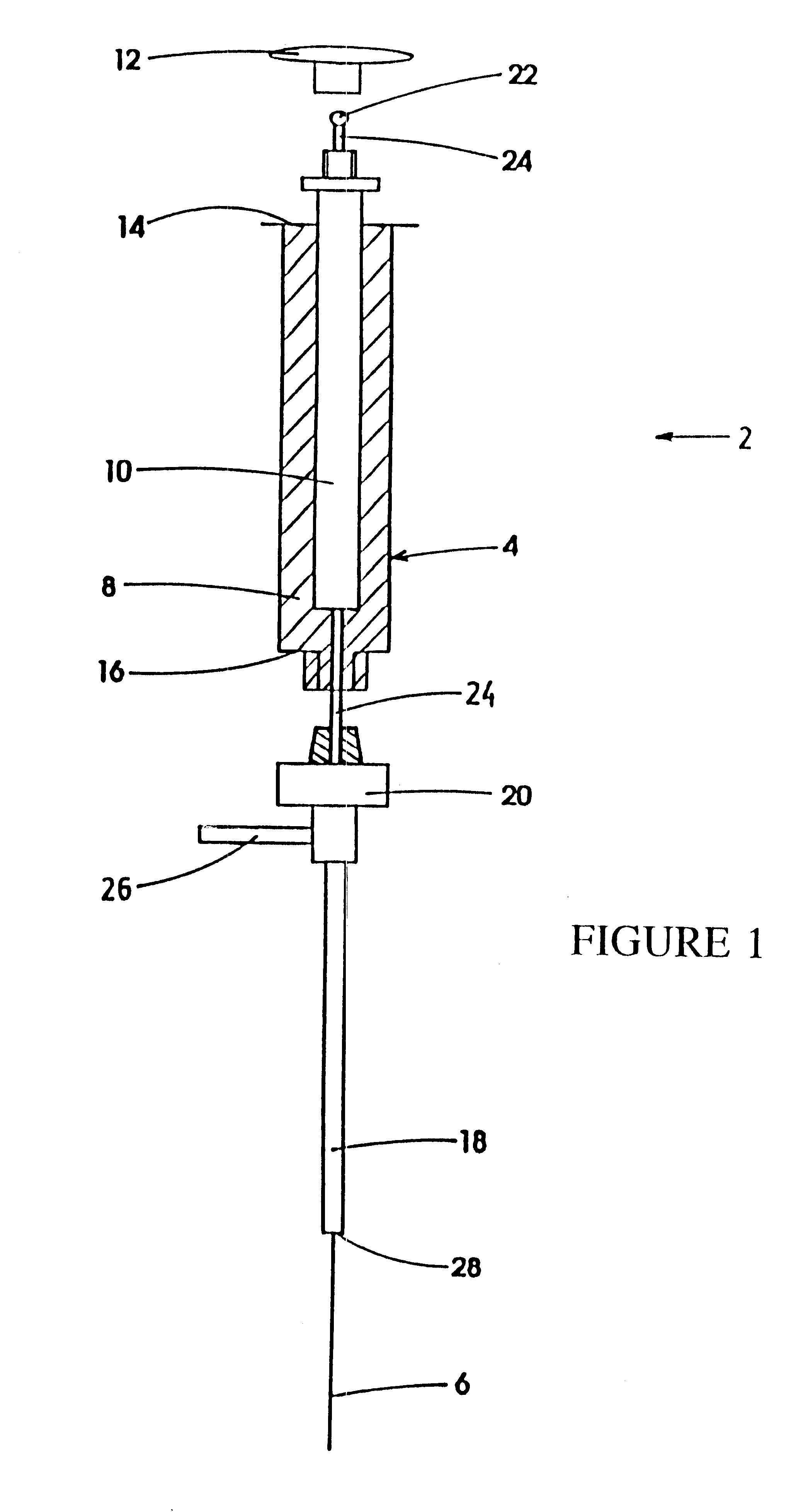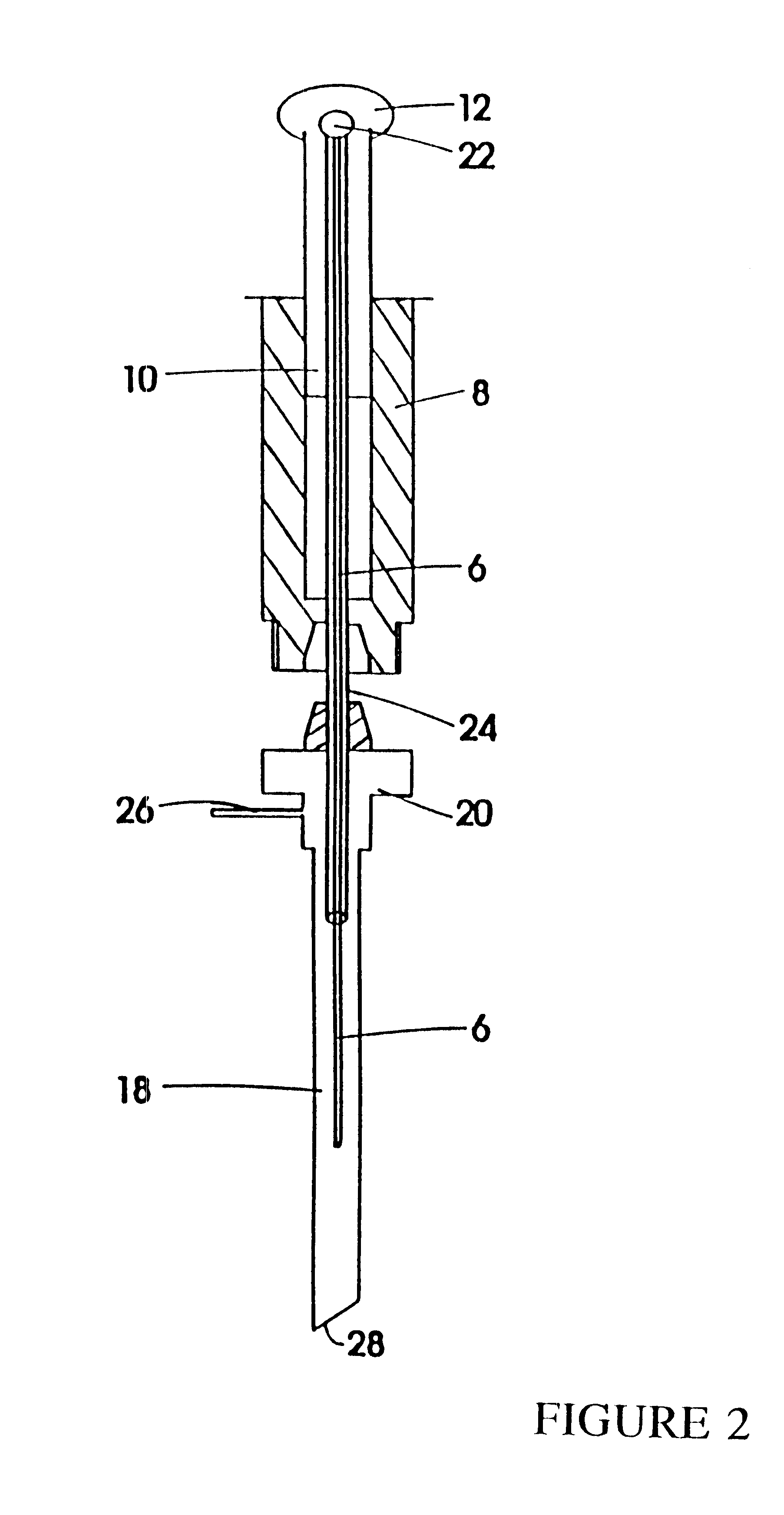Method and device for solid phase microextraction and desorption
a microextraction and solid phase technology, applied in the direction of separation processes, instruments, testing water, etc., can solve the problems of difficult automation, high toxicity of organic solids, time-consuming methods based on solvent extraction,
- Summary
- Abstract
- Description
- Claims
- Application Information
AI Technical Summary
Problems solved by technology
Method used
Image
Examples
Embodiment Construction
Referring to FIGS. 1 and 2 in greater detail, a device 2 for carrying out solid phase microextraction has a syringe 4 containing a fiber 6. The syringe 4 is made up of a barrel 8 which contains a plunger 10 and is slidable within the barrel 8. The plunger 10 has a handle 12 extending from one end 14 of the barrel 8. At the opposite end 16 of the barrel 8, there is located a needle 18 which is connected to the end 16 by the connector 20. The handle 12 and the needle 18 and connector 20 are shown in an exploded position relative to the barrel 8 for ease of illustration.
The fiber 6 is a solid thread-like material that extends from the needle 18 through the barrel 8 and out the end 14. An end of the fiber 6 (not shown) located adjacent to the cap 12 has retention means 22 located thereon so that the fiber will move longitudinally as the plunger 10 slides within the barrel 8. The retention means can be simply a drop of epoxy which is placed on the end of the fiber 6 near the handle 8 and...
PUM
| Property | Measurement | Unit |
|---|---|---|
| diameter | aaaaa | aaaaa |
| diameter | aaaaa | aaaaa |
| outer diameter | aaaaa | aaaaa |
Abstract
Description
Claims
Application Information
 Login to View More
Login to View More - R&D
- Intellectual Property
- Life Sciences
- Materials
- Tech Scout
- Unparalleled Data Quality
- Higher Quality Content
- 60% Fewer Hallucinations
Browse by: Latest US Patents, China's latest patents, Technical Efficacy Thesaurus, Application Domain, Technology Topic, Popular Technical Reports.
© 2025 PatSnap. All rights reserved.Legal|Privacy policy|Modern Slavery Act Transparency Statement|Sitemap|About US| Contact US: help@patsnap.com



